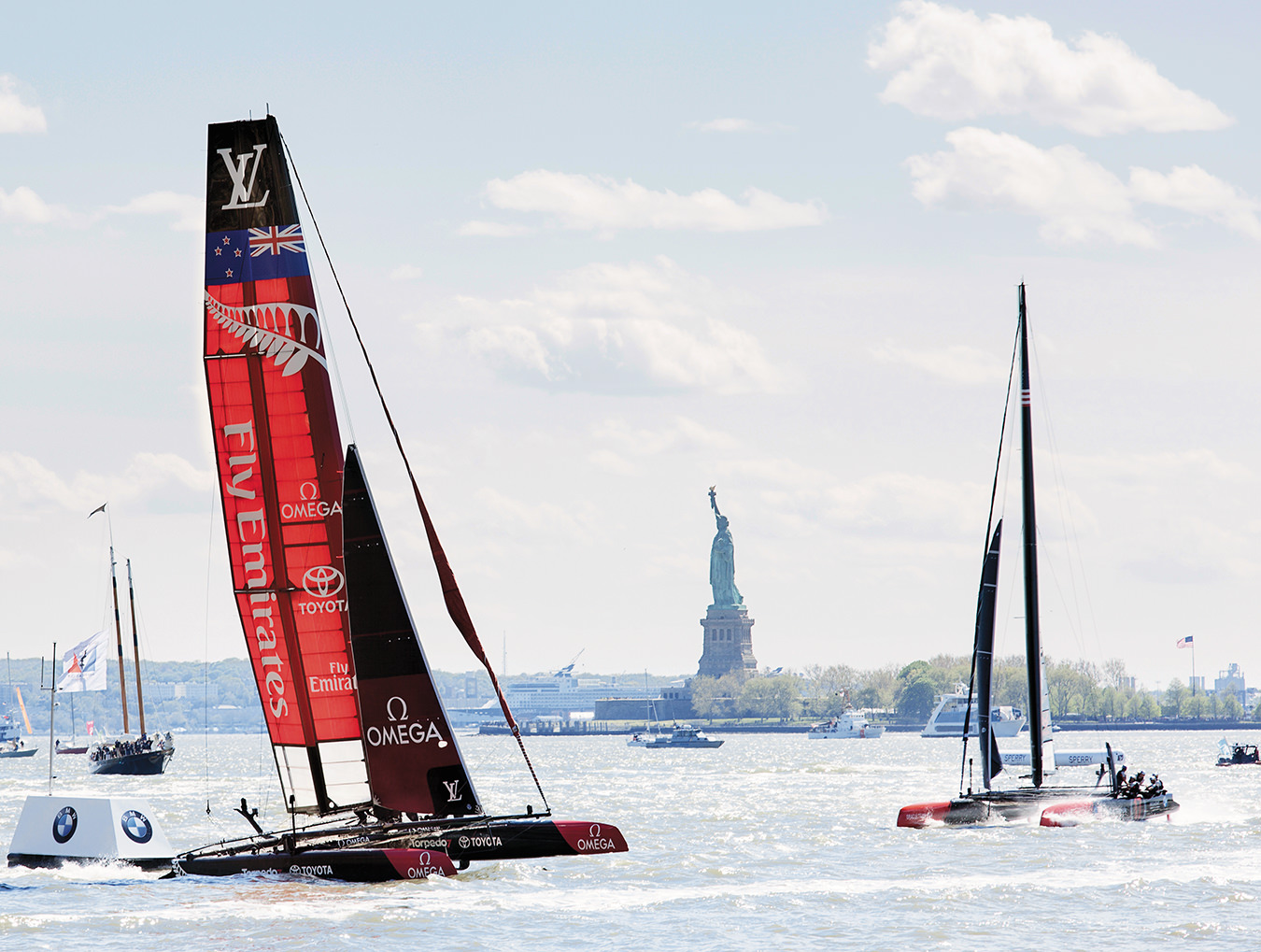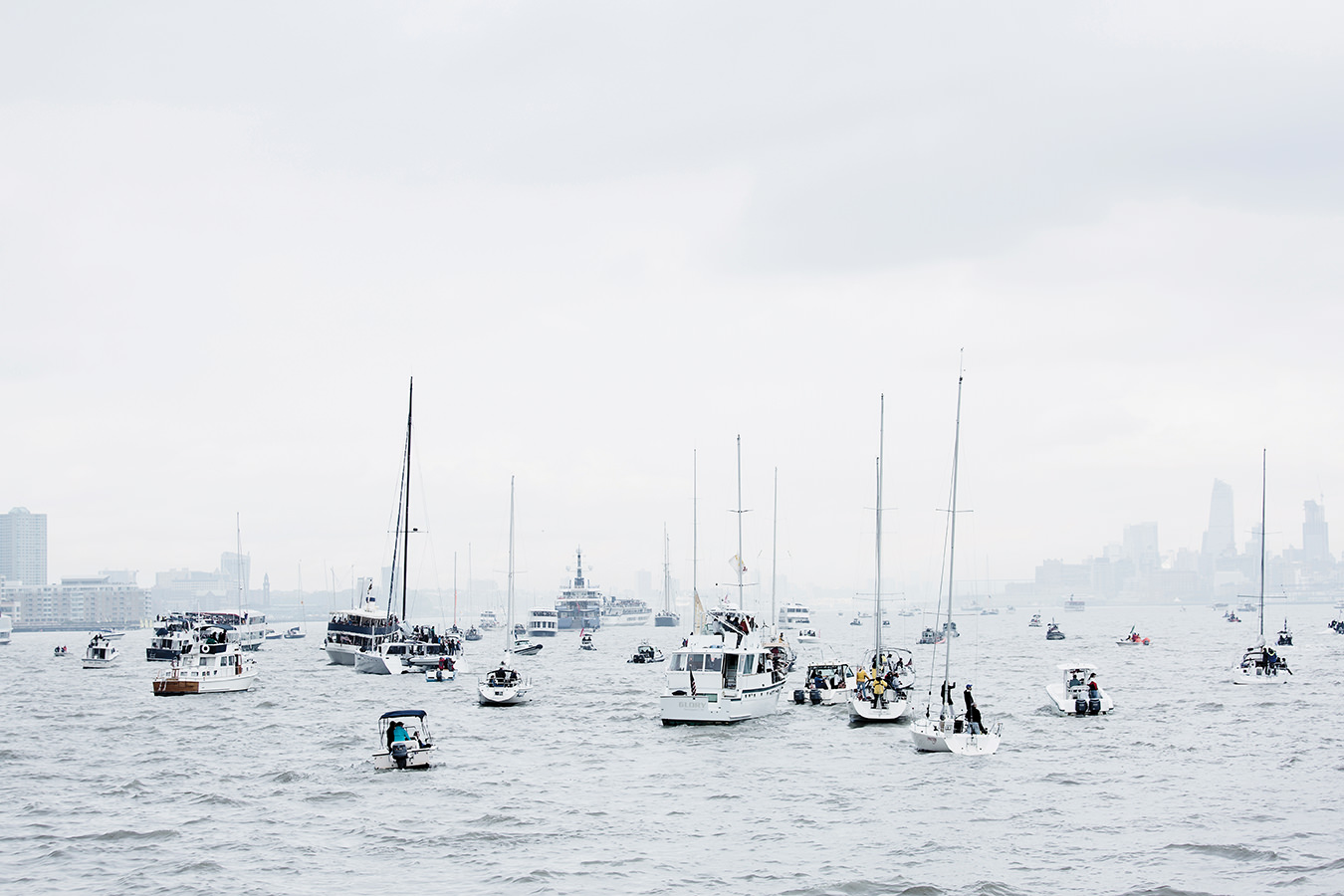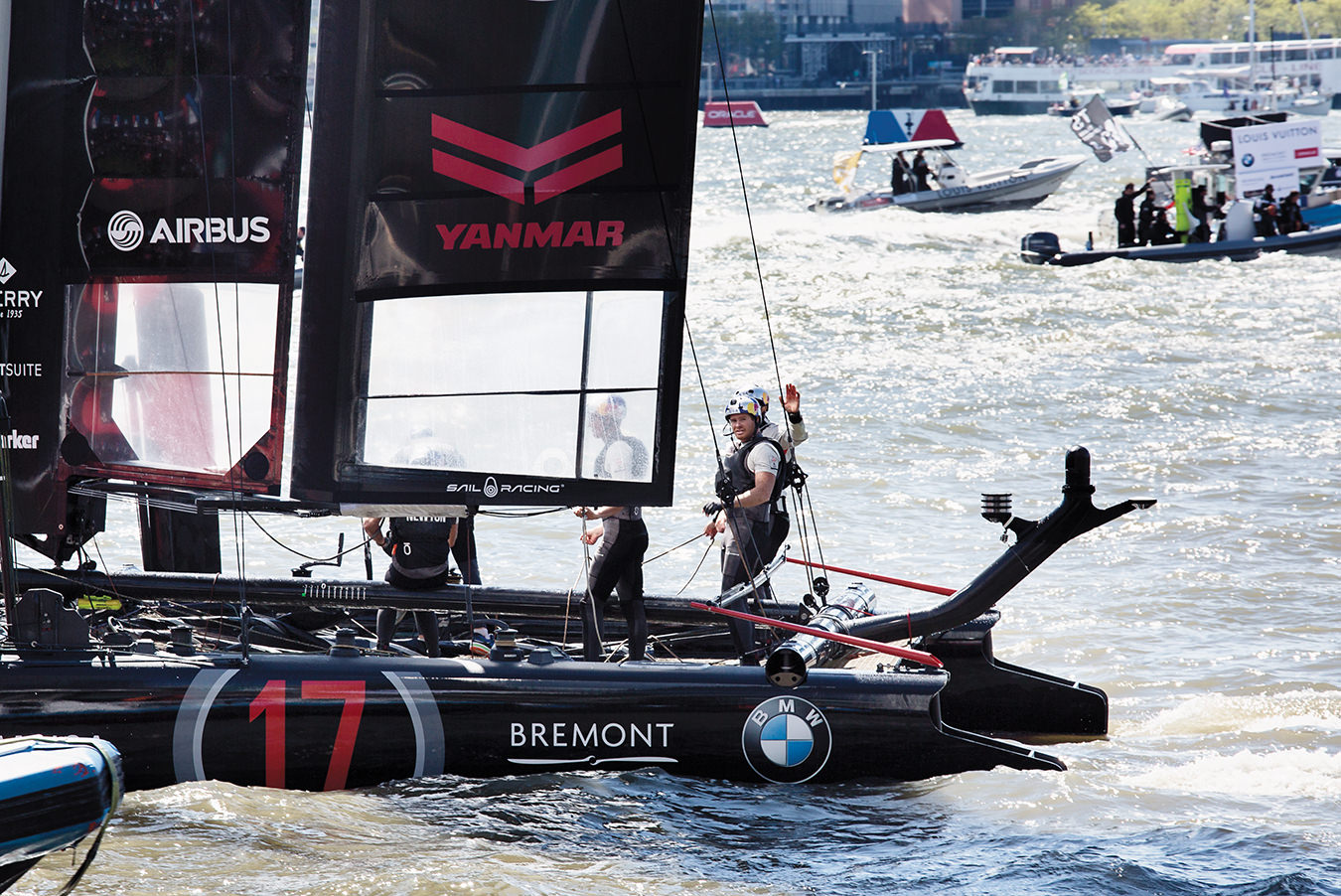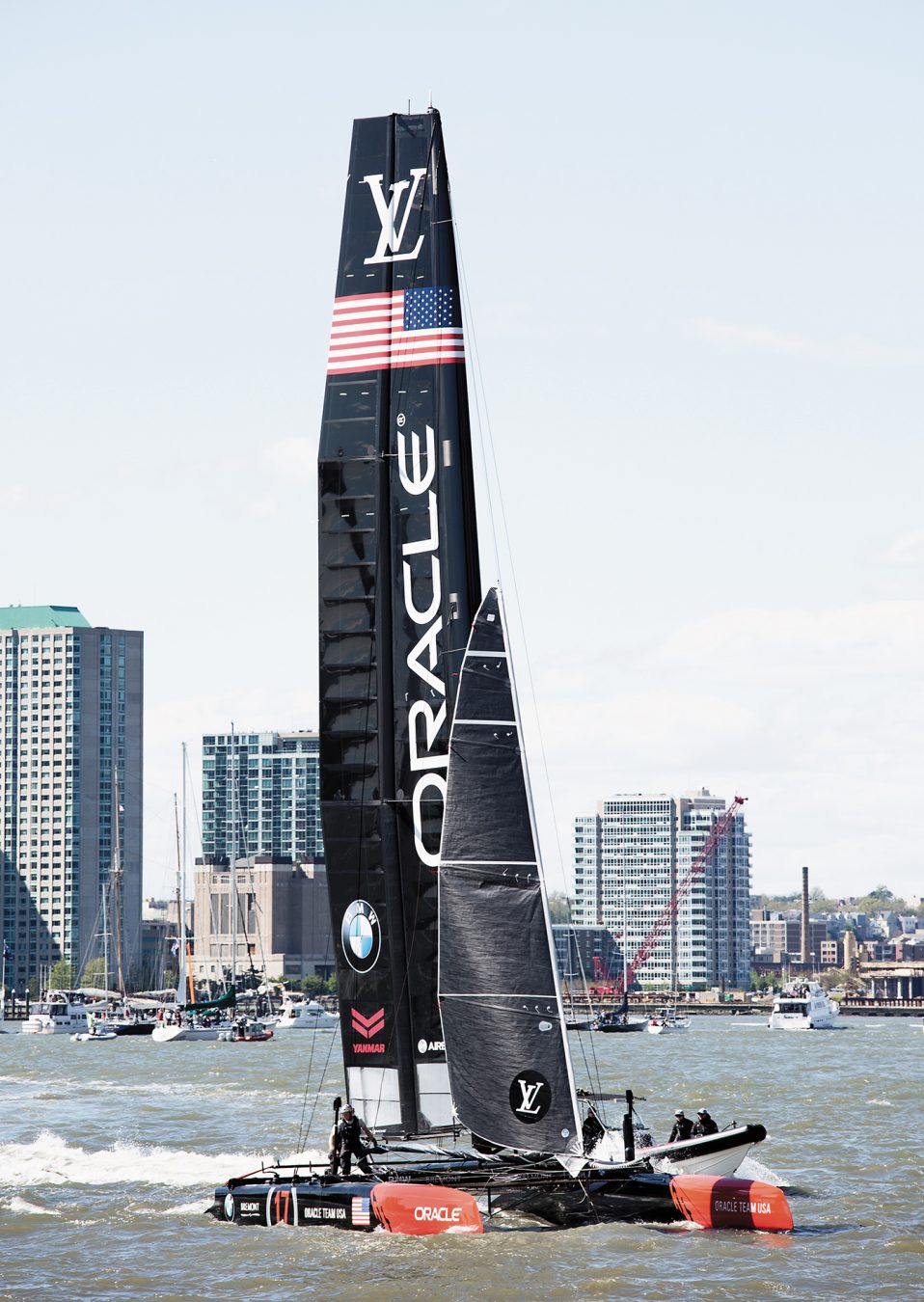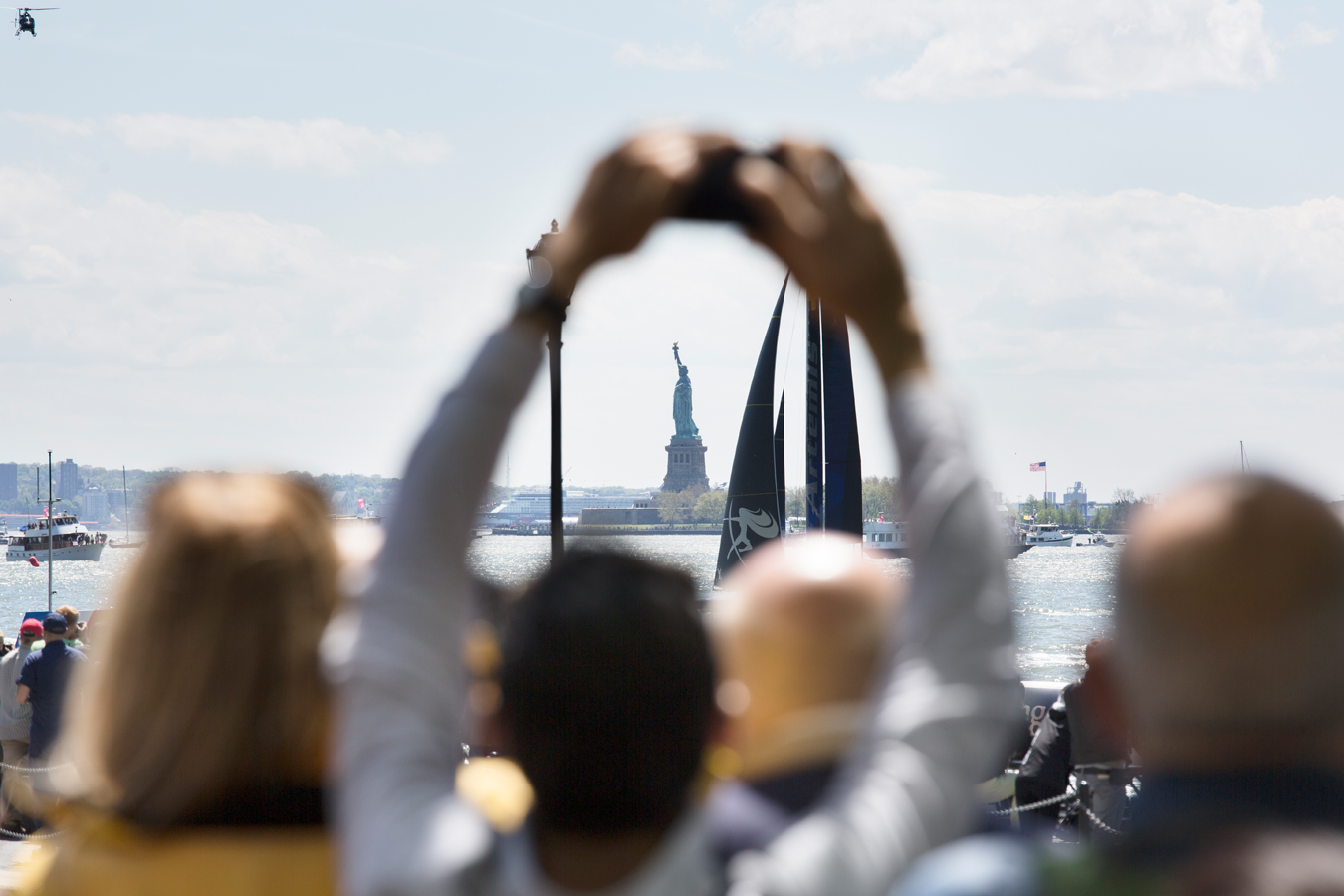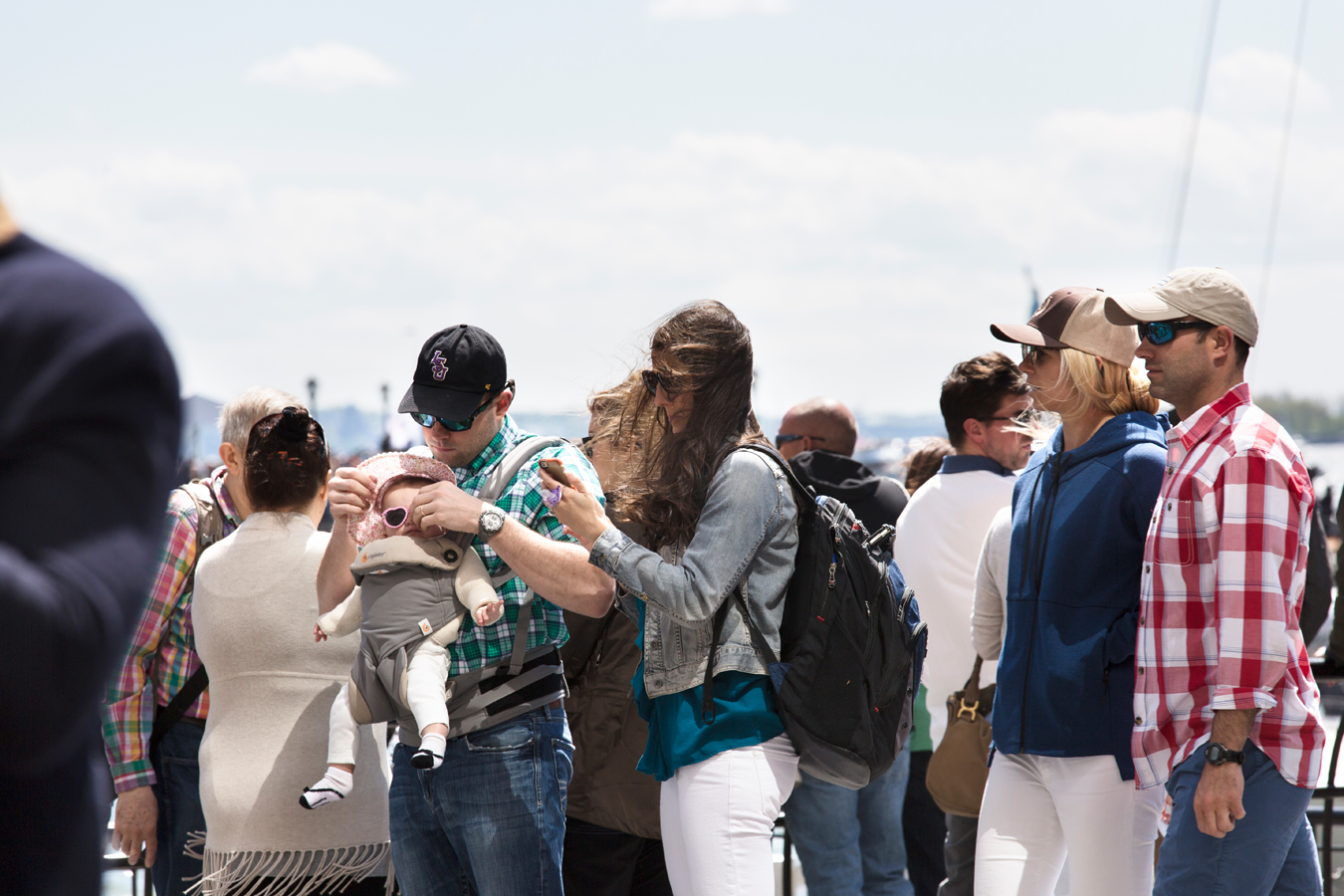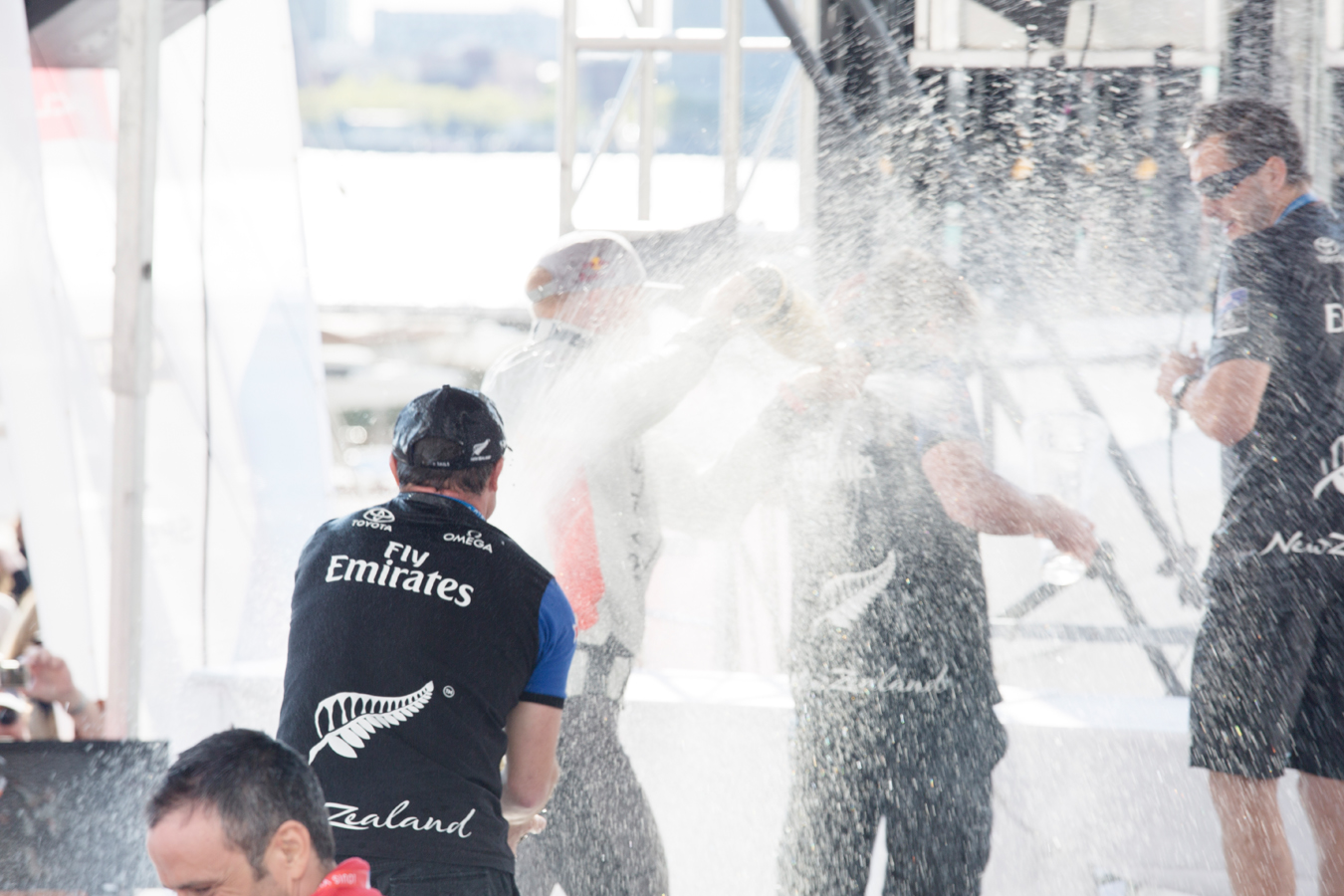An ultra-premium sporting event is unlike anything else. There is a proliferation of luxury brands each owning parts of precious sponsorship terrain. There are the abundant well-heeled observers, fans, aficionados. There are the athletes, protected and buffered like the royalty they really are. The pursuit of the oldest championship trophy in the world, the America’s Cup, is called the Louis Vuitton America’s Cup World Series, in which six teams of five sailors pit their vessels against each other in a series of races; the New York leg of this prestigious competition had it all.
A brief history: Commodore John Cox Stevens and his crew sailed from their home New York Yacht Club to England, in a new, and for its time technologically-advanced, schooner they called America. A race was arranged, with members of the Royal Yacht Squadron, and Queen Victoria herself was in attendance. America’s victory was so resounding that, famously, when the queen asked where the second place boat was as America sailed in front of her, the reply was, “Your Majesty, there is no second.” Commodore Stevens and his group of owners sold the America to the British, but returned to New York with a trophy, which was promptly named the America’s Cup, in honour of the triumphant ship.
A whole history of friendly (and often not-so-friendly, and even litigious) challenges ensued over the decades, with the trophy remaining in American hands until an Australian crew, manning a boat with a top-secret winged keel, defeated the Americans and took the trophy down under. The legendary U.S. skipper Dennis Conner made it his mission to reclaim the Cup for his country, which he successfully did, and had a remarkable run of defending it as well.
The crews are in constant motion, adjusting sails, maneuvering the foils, gauging the winds.
In 1983, Louis Vuitton became the overall sponsor of what eventually developed into a system of challenge races culminating in the naming of a challenger who would then take on the defending champion. The 2016 event sees five challengers: Emirates Team New Zealand, Land Rover BAR, Artemis Racing, Groupama Team France, and SoftBank Team Japan. Each team is led by an iconic skipper, and they race against each other and the defending champion, Oracle Team USA, in a series of races in Oman, New York, Chicago, Portsmouth, and Toulon. The aggregate points winners will then compete without Oracle Team USA, in the Louis Vuitton America’s Cup Challenger Playoffs, for the right to challenge Oracle Team USA, in Bermuda in 2017, which is called America’s Cup Match presented by Louis Vuitton. That final confrontation will determine the champion and holder of the America’s Cup. It is a complex system, and one can easily understand how legal challenges could erupt, given the technology of the boats, racing entry requirements, and race locations.
Once Louis Vuitton became involved, there was a steady commitment to finding a balanced, fair system, and that is what a rapt audience partakes in today. The boats are AC45 catamarans, equipped with hydrofoil technology. These foils enable the vessel to virtually fly above the water, and speeds of over 50 miles per hour can be achieved.
Ultimately, this is a test of sailing skill unlike any other; the crews are highly trained, and as Oracle Team USA skipper Jimmy Spithill said at a press conference, “It is a complete team effort. Without that, victory is impossible.” He adds, “Every team in this race is exceptional. We love it, because it is the ultimate test for us all.” The skipper and his four fellow crew members are fully synchronized, responding to wind and current conditions as they unfold. There is no deck on these boats, only a netting made of rope, enabling the sailors to move about with great alacrity and agility, while not weighing the vessel down.
The New York leg of the Louis Vuitton America’s Cup World Series marks the first time the competition has taken place in the city for 96 years. It was a momentous occasion, and even in a city with an over-abundance of things to do, the races drew nearly 100,000 people, who lined the promenade overlooking the Hudson River and watched the two days of racing. Russell Coutts, CEO of the America’s Cup Event Authority, says it has “been exciting to bring the racing back here. The modern boats allow us to bring the racing right up into the city front and close to the public.” Spithill adds, “The crowds were insane. It goes to show how popular the America’s Cup is becoming in America.”
One World Trade Center and its somewhat shorter neighbours look on benignly, setting a memorable backdrop for the boats and their 1,200-square-foot mainsails, resplendent in the breezes coming down the river. Helicopters buzz the area like an armada of hornets whose nest has been disturbed. The W Hoboken and the Statue of Liberty are the unlikely bookends at the north end of the race course.
Given the immense number of tall buildings surrounding the course, each team’s ability to read the wind shifts becomes the paramount concern. There is almost always one of the six boats that appears completely out of the race, far back of the pack, but things change rapidly, and a single gust can take a boat from last to first in a dazzling few seconds, while the others remain more or less becalmed. It is a startling sight, to see an idle boat catch a breeze and surge from five to 50 knots in the blink of an eye.
The crews are in constant motion, adjusting sails, maneuvering the foils, gauging the winds. Right from the boat and hooked up to a microphone, Land Rover BAR skipper Sir Ben Ainslie notes, with some bemusement, that “staying in phase with these wind shifts is nearly impossible today.” Saturday’s races in fact are not entered into the official record, since there was not enough wind to make it a proper race.
The America’s Cup, from its inception, has been an international sporting challenge, in which some intrigue and technological innovation have played integral parts.
It is an impressive scene, as observed from a “chaser boat” that rides pretty much right alongside the catamaran, when the foils are deployed and the boat is virtually hoisted right out of the water, with an attendant burst of speed. It appears to be physically impossible, actually, what they do. But there it is, right in front of your disbelieving eyes: the boat is in contact with the water only by virtue of a thin strip of hydrofoil.
Sunday, with blustery gusts and a fairly steady breeze, made for a memorable three races, and the scores were compiled based on the three, instead of a normal two each day. Just to underscore how unpredictable the wind conditions can be in these contests, the Emirates Team New Zealand boat, floundering in last place for almost the entire race, appeared to be completely out of luck. The other five boats were huddled close together, moving steadily to the finish line under a shared wind current. But a sudden breeze took the New Zealand sails, and instantly it was speeding ahead, and won by a significant margin. As Land Rover BAR skipper Ainslie said at a press conference afterwards, “It felt like we were standing still out there.” Spithill, who took second place, says that “in these conditions you have to roll with the punches and keep fighting,” adding that “the racing was fun because it was never over. There were a lot of opportunities. Constant overtaking, lead changes, and that’s what racing is all about.”
The America’s Cup, from its inception, has been an international sporting challenge, in which some intrigue and technological innovation have played integral parts. The obvious symbolism of the immense naval power of Great Britain ceding a race and trophy to an upstart from the New World had resonance back then. Today, it is much more about pure racing skill, a competition of the highest order, in which the stakes are high, in terms of reputation, of legacy. Skipper Spithill won his first America’s Cup at the age of 30, the youngest skipper to ever do so, and certainly his place is assured.
But every challenge brings a new reality, a possibility that the Cup will be wrested from the grasp of the defender, to spend time abroad. No protector ever wants to lose, and thus the grandeur, the beauty, the pomp and circumstance of the races and the social events surrounding them, all give way to the most tenacious of competitions, keel to keel, jib to jib, out there on the open water.
_________
Read more sport stories.

